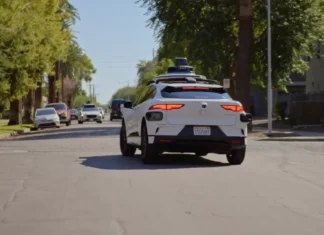SPONSORED CONTENT
Advanced Driver Assistance Systems (ADAS) are increasingly becoming standard features in modern vehicles, aiming to enhance safety and reduce the likelihood of accidents. As technology progresses, the legal landscape surrounding car accident liability is also evolving. Understanding how ADAS affects liability is crucial for drivers, insurers, and policymakers alike.
With features like automatic braking, lane-keeping assistance, and adaptive cruise control, these systems can potentially change the dynamics of fault in an accident. Drivers may rely more on technology, which raises questions about accountability in the event of a crash. This shift in responsibility complicates traditional liability models, as it becomes essential to discern whether a driver or the technology itself is at fault.

Overview of Advanced Driver Assistance Systems
Advanced Driver Assistance Systems (ADAS) play a critical role in enhancing vehicle safety and improving driver experience. These systems utilize various technologies to assist drivers in preventing accidents and reducing liability complications in car crashes.
Functionality and Types of ADAS
ADAS includes several features designed to assist drivers in real-time. Common functionalities are:
- Adaptive Cruise Control: Automatically adjusts the vehicle’s speed to maintain a safe distance from the vehicle ahead.
- Lane Departure Warning: Alerts drivers when they unintentionally drift out of their lane.
- Automatic Emergency Braking: Engages brakes when a collision is imminent.
- Blind Spot Monitoring: Provides warnings about vehicles in the driver’s blind spots.
These systems rely on sensors, cameras, and radar to detect and respond to driving conditions. As usage increases, they inform liability discussions when accidents occur, as determining negligence may involve the extent of ADAS use and reliability.
Evolution of ADAS Technology
ADAS technology has undergone significant advancements since its inception. Initially, systems relied on basic sensors and rudimentary algorithms. Over the years, improvements in computing power and sensor accuracy have facilitated the development of more sophisticated features.
The integration of machine learning has enabled systems to learn from various driving scenarios, enhancing their reliability. Modern vehicles often come equipped with a suite of ADAS features, making them safer and potentially reducing accidents.
As ADAS technology continues to evolve, it raises new questions about liability. Understanding how these systems interact with driver behavior is crucial for legal interpretations in car accidents.
Legal Implications of ADAS in Car Accidents
Advanced Driver Assistance Systems (ADAS) introduce complex legal considerations in the context of car accidents. These systems affect the delineation of responsibility among drivers, manufacturers, and insurers. Understanding these implications is essential for all parties involved.
ADAS Malfunctions and Manufacturer Liability
When an ADAS malfunctions and contributes to an accident, questions arise about manufacturer liability. If the failure is due to a design defect, inadequate testing, or failure to provide sufficient warnings, manufacturers could be held responsible.
In legal claims, plaintiffs must establish that the malfunction directly caused the accident. Evidence may include expert testimony, maintenance records, and system diagnostics. Manufacturers may face claims under product liability laws, complicating cases for attorneys, particularly in regions like Santa Barbara.
Driver Responsibility and ADAS
Drivers remain responsible for their actions, even when operating vehicles equipped with ADAS. These systems are designed to assist rather than replace human judgment. If a driver disregards instructions or fails to maintain control, liability may still rest on them.
Courts may evaluate whether drivers were adequately using the technology. Factors like inattentiveness or misuse can significantly influence cases. In situations involving reckless driving, an attorney’s input becomes crucial to navigating these nuances.
Insurance Considerations with ADAS
Insurance policies are adapting to the presence of ADAS in vehicles. Insurers must assess whether ADAS-related claims fall under traditional coverage or require additional policies. This assessment impacts both premiums and liability determinations.
Insurance companies may also reconsider how fault is assigned in accidents involving ADAS. Adjusters need to analyze data from these systems to determine driver actions leading up to the incident. Knowledge of legal precedents will be vital for insurers when handling claims involving new technology.
Legal Precedents
Advanced Driver Assistance Systems (ADAS) have started shaping legal discussions surrounding liability in car accidents.
Role of Legal Professionals in ADAS Cases
Legal professionals are crucial in navigating complex ADAS-related litigation. Lawyers for car accident cases must understand both technology and law.
For example, Santa Barbara car accident lawyers often analyze technical data and expert testimony to build cases. They advise clients on liability, addressing nuances based on vehicle features and driver actions.
Furthermore, legal professionals must stay updated on evolving regulations surrounding ADAS. Understanding precedents allows them to predict outcomes and develop effective legal strategies. This combination of legal acumen and technical insight is essential for successful litigation in an increasingly tech-driven landscape.
Future Impacts and Considerations
As Advanced Driver Assistance Systems (ADAS) continue to evolve, significant implications for legal liability in car crashes arise. Regulatory frameworks and technological advancements will play vital roles in shaping these dynamics.
Regulatory Changes and ADAS
New regulations may emerge as ADAS becomes more prevalent. Governments could establish standards for safety and performance, creating clearer guidelines for liability in accidents involving these systems.
For instance, if an accident occurs while an ADAS is actively engaged, determining liability may hinge on compliance with regulatory standards. Possible scenarios include:
- Automaker liability: If the system fails to perform as promised.
- Driver responsibility: If the driver misuses the system.
Adhering to new regulations will also require manufacturers to maintain robust data records, potentially influencing legal outcomes in future accidents.
Advancements in ADAS and Liability Trends
Technological improvements in ADAS will change how liability is assessed in car accidents. Enhanced features such as collision detection and automatic braking will likely reduce human error, shifting responsibility from the driver to the technology itself.
As these systems become more sophisticated, liability may be attributed in varied ways:
- Shared liability: Between drivers and manufacturers when multiple factors contribute to an accident.
- Insurance models: Insurers may adjust premiums based on the effectiveness of ADAS technologies.
Ongoing innovation will necessitate a reevaluation of existing legal frameworks to address these emerging complexities in liability.























